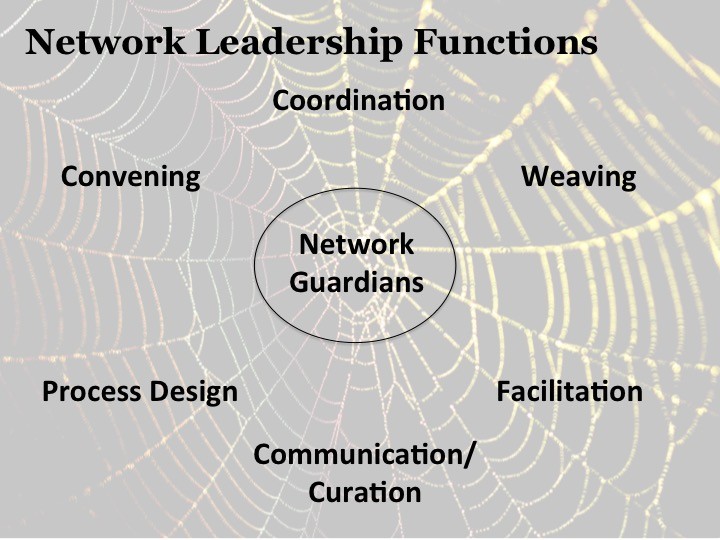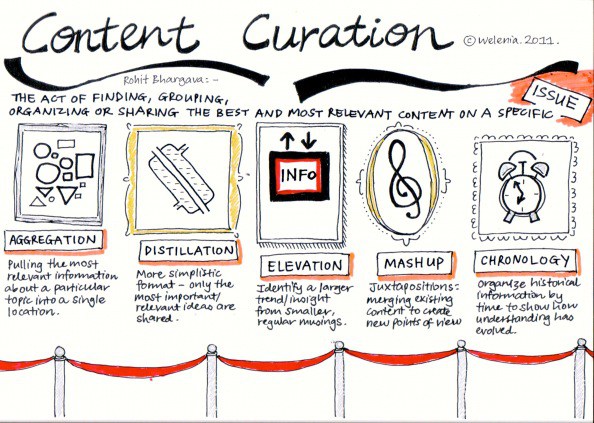
This post was adapted from the original post on the Interaction Institute for Social Change’s blog by Curtis Ogden on February 24, 2016.
“Network entrepreneurs are keenly aware that they are few among many working across the larger system, and in this way they embody a special type of … leader[ship].” – Jane Wei-Skillern, David Ehrlichman, & David Sawyer

The concept of leadership has been undergoing an evolution. In this “network age” there appears to be both an expanding appreciation that leadership has always been about more than the singular heroic individual, and that going forward, leadership really must be much more of a shared endeavor.
In our collaborative consulting work at IISC, leadership (or what we often call Facilitative Leadership) is about “holding the whole,” thinking expansively about the state of a given complex system (community, economy, ecosystem, etc.) and paying attention to what will be required to ensure resiliency and/or change for more equitable and sustainable benefit. In these situations, the traditional top-down images of leadership fall far short.
Network leadership is at best a dynamic, diverse, more decentralized and multi-dimensional phenomenon. Many of those with whom we partner at IISC understand this implicitly, and we have found it important to help them be more explicit about this by clearly delineating the roles that leadership can embody in a collaborative/networked change endeavor.

One over-arching and all-encompassing role to be named, with a bow of recognition to June Holley for coining the term, is network guardianship. Many if not all the roles named below contribute to establishing a collaborative and trusting culture within networks. This culture is important to establish and protect, especially at the outset of an initiative (in a food justice initiative we referred to the early pioneers of networks as “network gardeners“), though one might say it is important throughout to keep networks from becoming too calcified or exclusive.
Network guardianship is about preserving and modeling fundamental network values such as transparency, openness, respect, generosity, and mutualism.
Convening
A convenor is a person or group who has “convening power” and provides the social capital and connections to pull people together and some of the resources to support a given initiative (money, space, technology) and build the network. In our IISC practice, convenors are often foundations, municipal governments, academic institutions and community-based organizations. Their role includes championing the cause, raising awareness, and making the initial and ongoing invitation to come together.
(Process) Design
The “process design team,” in IISC’s practice, is comprised of a diverse group of people representing different parts of “the system” upon which an initiative is focused who are responsible for mapping out a pathway (meetings, research, stakeholder outreach) that help to move a wider group of stakeholders from vision to action. They are charged with, and enjoy, the creative endeavor of fashioning experiences that enliven and bring out the best in people, including the creation of space for difficult conversations and strengthening connections.
Facilitation
The facilitator is a person or team responsible for stewarding the overall process, for holding the space for difficult and productive conversations, listening to the wisdom of the group, helping to build alignment and agreement, and balancing structured discussion with openness for emergent possibilities.
Weaving
From The Network Weaver Handbook: “A network weaver is someone who is aware of the networks around them and explicitly works to make them healthier. They do this by helping people identify their interests and challenges, connecting people strategically where there’s potential for mutual benefit, and serving as a catalyst for self-organizing groups.” In the Food Solutions New England network initiative that IISC supports, there is a particular group of funded individuals called “Ambassadors” who are charged with doing outreach to under-represented and often marginalized groups.

Communications and Curation
Communications in change networks is a nuanced and complex role. It is about helping to create and fill a variety of channels (one-to-one, one-to-many, many-to-many) so that people can stay connected, share freely and learn in timely ways. In many cases, it is helpful to have a role committed to content curation (see image above) – to soliciting, aggregating, distilling, highlighting and organizing an abundance of information to keep the network humming.
“Your generosity is more important than your perfection.” – Seth Godin
Provocation
The provocateur be an informal or formal role, and is filled by a person or people who can ask the otherwise unasked questions, challenge a group or initiative when it is reaching agreement too easily or getting too comfortable and safe with its work. The intent is to stimulate new and bold thinking.
Coordination
In our practice, network coordination comes down in large part to creating and maintaining a support infrastructure, scheduling common meeting times, and ensuring that people have access to relevant resources.
Implementation/Prototyping
In networks, so-called “implementers” are not simply putting into action a “strategic plan,” but running with nascent and promising ideas, experimenting and honing as they go. We often find prototyping occurring at the “edges” of larger projects in the form of new partnerships and conversations going off and trying out new things – this is self-organization (see video below), where the magic in networks often emerges.
Governance
This is the function that people most often want to turn to first, because the knee-jerk reaction is to want to bring some order to any perceived chaos. How will we make decisions? How will we develop policy or make strategic recommendations? How will we get things done? Valid questions, and if the default is to a traditional governing board structure, a steering committee, it can limit network potential. As our friend Jessica Lipnack has said, “You only need enough structure to facilitate conversation and make key decisions.” Less is more, and structure can be fluid. A network principle that I find helpful to invoke is that of subsidiarity in governance – that is, matters ought to be handled by the smallest, closest to the ground or least centralized competent “authority.”
Surely there are other valuable roles and takes out there. Please add your thoughts!
Curtis Ogden is a Senior Associate with the Interaction Institute for Social Change (IISC), a member of the FSNE Network Team, and the facilitator for the FSNE network activities on behalf of IISC. He supports a variety of food system-focused networks through his work at IISC. Curtis lives in Amherst, MA with his wife and three daughters.




